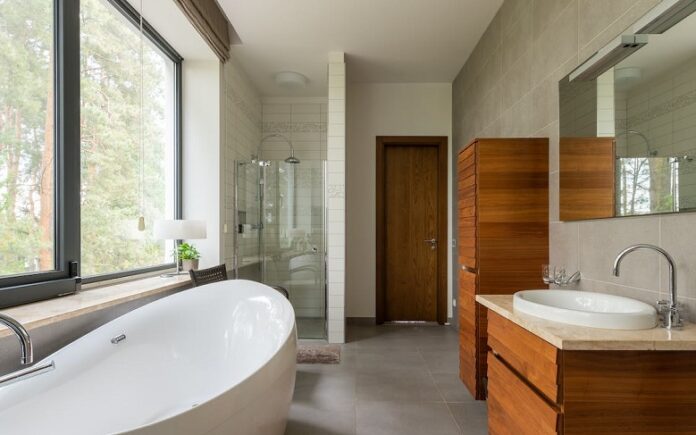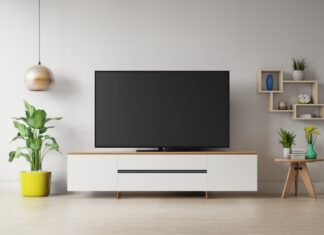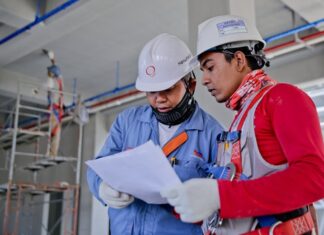Bathroom renovation is an exciting venture for homeowners, offering the opportunity to transform a functional space into a personalized retreat. However, the decision to embark on this project often comes with hesitation, primarily due to concerns about the costs involved. It’s important to understand that the cost of bathroom remodeling varies greatly depending on various factors.
For instance, in Long Island, the range of remodeling costs can be quite extensive, from as low as $8,400 to as high as $49,400. This variation is largely influenced by factors such as the size of the bathroom and the extent of the renovation needed. Whether you’re looking to update fixtures, overhaul the entire space, or something in between, understanding and budgeting for these factors is crucial in making your bathroom remodel a success.
So, let’s get started:
1. Plumbing Considerations
Table of Contents
When renovating a bathroom, one of the first and most crucial elements to consider is the plumbing. The functionality and efficiency of your bathroom are heavily reliant on the quality of its plumbing system. It’s not simply about ensuring that taps and showers work correctly; it involves considering the layout of pipes, water pressure, and drainage. Given the complexity of these systems, it’s advisable to consult with professionals. Looking up Long Island plumbing company near me on Google can lead you to experts who can assess your current plumbing situation and provide guidance on necessary upgrades or changes.
Professional plumbers can help you navigate challenges such as relocating fixtures, which can be a significant task involving rerouting pipes and possibly dealing with structural elements. They can also advise on the latest fixtures that can add efficiency and value to your bathroom, like low-flow toilets and showerheads that reduce water usage without compromising performance. Remember, while DIY may seem like a cost-saving option, professional input in plumbing can prevent costly mistakes and future problems.
2. Layout and Space Utilization
The layout of your bathroom is another critical factor to consider. Effective use of space can make a significant difference in the functionality and aesthetic appeal of your bathroom. Especially in smaller bathrooms, smart layout planning can maximize the use of available space. It might include choosing the right size and placement of fixtures, such as sinks, toilets, and showers, to ensure comfortable movement and usability.
Creative solutions, like wall-mounted toilets or corner sinks, can be employed to make the most of limited space. Additionally, the layout should be planned with future accessibility in mind, possibly incorporating features like walk-in showers or wider doorways. Keep in mind that changing the layout can involve extensive plumbing and electrical work, so it’s important to weigh the benefits against the costs and complexity of such changes.
3. Choice of Materials
Selecting the right materials is pivotal in determining both the look and longevity of your bathroom remodel. When choosing materials for surfaces like floors, walls, and countertops, factors such as durability, maintenance, and aesthetics need to be balanced. For flooring, for instance, materials should be water-resistant and slip-resistant while also fitting the overall style of the bathroom.
Quality should be a priority, as higher-quality materials, though often more expensive, tend to last longer and withstand the damp bathroom environment better. Materials like porcelain or ceramic tiles are popular choices for their durability and water resistance. For countertops, options range from granite and marble to more budget-friendly but still durable alternatives like laminate or tiled surfaces. It’s crucial to weigh the cost against the quality, as investing in high-quality materials can reduce the need for future repairs and renovations, ultimately saving money in the long run.
4. Lighting and Ventilation
Lighting and ventilation are key components in a bathroom renovation that often go overlooked. Proper lighting is essential not only for aesthetics but also for functionality. It enhances the bathroom’s ambiance while providing sufficient illumination for tasks like grooming. Layered lighting, incorporating a mix of overhead, task, and accent lighting, can create a balanced and versatile lighting scheme. Consider energy-efficient LED options for both cost savings and environmental benefits.
Ventilation is equally important in a bathroom to prevent moisture accumulation, which can lead to mold and mildew growth. A good ventilation system will help maintain air quality and protect the longevity of your bathroom fixtures and finishes, which often involves installing an appropriate exhaust fan, which should be correctly sized for your bathroom’s volume. Professional advice can be crucial here to ensure that the ventilation system meets both your needs and building code requirements.
5. Style and Aesthetic Appeal
The style and aesthetic appeal of your bathroom should reflect your unique taste while complementing the overall design theme of your home. It involves choosing a color scheme, fixtures and finishes that align with your desired look, whether it’s modern and sleek, traditional and elegant, or something in between. Consider current trends, but also think about timelessness in your design choices. For example, neutral colors and classic fixtures can offer longevity in style, whereas trendy elements can be incorporated through easily changeable items like towels or decor.
When selecting fixtures like sinks, bathtubs, and toilets, consider both their visual appeal and functionality. Features such as freestanding bathtubs can serve as a focal point in the design. However, ensure they fit comfortably within your space and budget. Similarly, consider the finish of your fixtures (chrome, brushed nickel, matte black, etc.), as this can significantly affect the room’s overall feel. Balancing style with practicality is key in creating a bathroom that is not only beautiful but also comfortable and functional.
6. Budget Planning and Cost Management
Budget planning is perhaps the most crucial aspect of a bathroom renovation. It is important to set a realistic budget that accounts for all aspects of the renovation, including materials, labor, unexpected expenses, and even temporary accommodations if the bathroom will be unusable for a period. Start by getting quotes from contractors and pricing out materials to have a clear understanding of potential costs.
Managing costs throughout the project is also vital. It can involve making strategic decisions about where to splurge and where to save. For example, investing in high-quality fixtures in areas of high use, like faucets and showerheads, may be more cost-effective in the long run. At the same time, you might choose more budget-friendly options for elements like hardware or accessories. Keep track of all expenses as the project progresses and maintain a contingency fund for unexpected costs.
Conclusion
Renovating a bathroom is a significant project that requires careful consideration in various aspects. From ensuring efficient plumbing and making the most of the available space to choosing durable materials, incorporating effective lighting and ventilation, selecting the right style, and managing the budget, each factor plays a crucial role in the success of the renovation. By being mindful of these elements, you can transform your bathroom into a functional, stylish, and comfortable space that meets your needs and enhances your home’s value.











